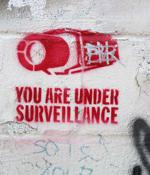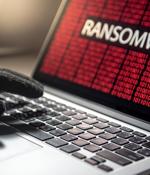Security News

Using a panel of 709 volunteers who shared archives of their Facebook data, Consumer Reports found that a total of 186,892 companies sent data about them to the social network. On average, each participant in the study had their data sent to Facebook by 2,230 companies.

It finally admitted to buying bulk data on Americans from data brokers, in response to a query by Senator Weyden. This is almost certainly illegal, although the NSA maintains that it is legal until it's told otherwise.

For a country that prides itself on being free, America does seem to have an awful lot of spying going on, as the new Street Surveillance Hub from the Electronic Frontier Foundation shows. The Hub contains detailed breakdowns of the type of surveillance systems used, from bodycams to biometrics, predictive policing software to gunshot detection microphones and drone-equipped law enforcement.

About Bruce Schneier I am a public-interest technologist, working at the intersection of security, technology, and people. I've been writing about security issues on my blog since 2004, and in my monthly newsletter since 1998.

This is not about mass surveillance of mail, this is about sorts of targeted surveillance the US Postal Inspection Service uses to catch mail thieves: To track down an alleged mail thief, a US...

Many US businesses may be required to assist in government-directed surveillance - depending upon which of two reform bills before Congress is approved. Under rules being considered, any telecom service provider or business with custodial access to telecom equipment - a hotel IT technician, an employee at a cafe with Wi-Fi, or a contractor responsible for installing home broadband router - could be compelled to enable electronic surveillance.

Two competing bills to reauthorize America's FISA Section 702 spying powers advanced in the House of Representatives committees this week, setting up Congress for a battle over warrantless surveillance before the law lapses in the New Year. The bipartisan bill reauthorizes Section 702 of the Foreign Intelligence Surveillance Act for three years with reforms including requiring all US intelligence agencies to obtain a warrant before conducting a US person query.

Mass surveillance fundamentally changed the nature of surveillance. Because all the data is saved, mass surveillance allows people to conduct surveillance backward in time, and without even knowing whom specifically you want to target.

According to the letter, a surveillance program now known as Data Analytical Services has for more than a decade allowed federal, state, and local law enforcement agencies to mine the details of Americans' calls, analyzing the phone records of countless people who are not suspected of any crime, including victims. Using a technique known as chain analysis, the program targets not only those in direct phone contact with a criminal suspect but anyone with whom those individuals have been in contact as well.

Generative AI is going to be a powerful tool for data analysis and summarization. Here's an example of it being used for sentiment analysis.